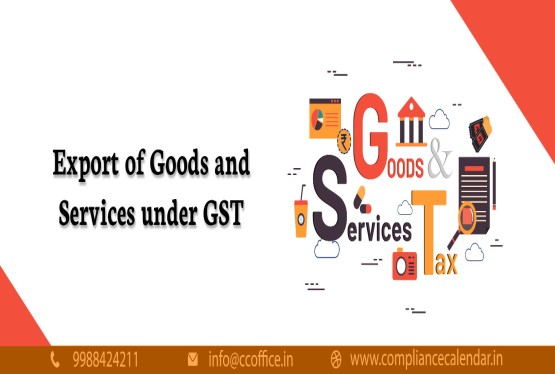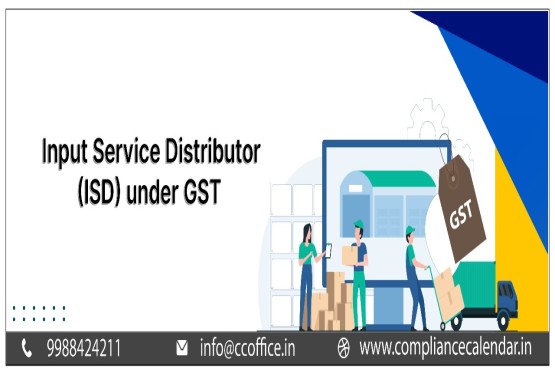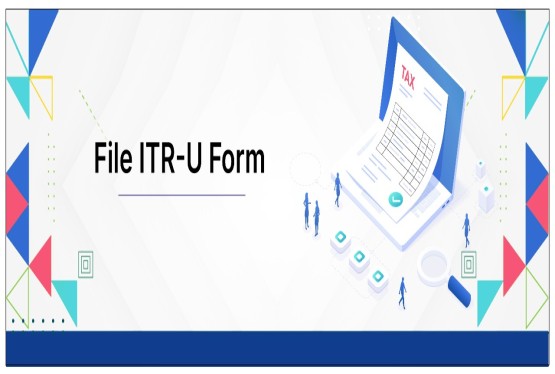The Goods and Services Tax (GST) regime in India has brought about a uniform taxation system for both goods and services across the country. One of the key operational aspects of GST lies in the mechanism through which tax is paid to the government. There are two primary methods of tax payment under GST: the forward charge mechanism and the reverse charge mechanism. Each of these methods has distinct implications for taxpayers in terms of compliance, responsibility, and documentation. In this article, we will discuss the Difference Between Forward Charge and Reverse Charge, focusing on definitions, practical examples, time of supply, and compliance requirements. Business owners, tax consultants, and accountants need to grasp the concept of Forward Charge and Reverse Charge in GST to ensure accurate tax filing and avoid legal consequences.
What is Forward Charge Mechanism in GST?
Under the forward charge mechanism, the responsibility to collect and deposit GST lies with the supplier of goods or services. This is the traditional way in which tax is collected. The supplier issues an invoice that includes the tax amount, collects the total amount from the buyer, and then deposits the tax collected with the government.
The forward charge is the default mechanism in GST. It is applied in most business-to-business (B2B) and business-to-consumer (B2C) transactions. The recipient of goods or services, in this case, pays the tax component to the supplier along with the cost of the goods or services. The supplier then becomes liable to remit this GST amount to the government.
Example of Forward Charge Mechanism
Consider a customer purchasing a car from a dealership. Suppose the car costs Rs. 3,00,000 and the applicable GST rate is 18%. The tax calculation will be:
-
GST = (3,00,000 * 18%) = Rs. 54,000
-
Total payable amount = Rs. 3,00,000 + Rs. 54,000 = Rs. 3,54,000
In this scenario, the dealership collects Rs. 3,54,000 from the buyer and remits Rs. 54,000 to the government as GST. The dealership is responsible for filing returns and paying tax under the forward charge mechanism.
What is Reverse Charge Mechanism in GST?
The reverse charge mechanism (RCM) is an exception to the usual tax payment process. Here, the responsibility to pay GST lies with the recipient of goods or services, not the supplier. This mechanism was introduced to bring unregistered suppliers and specific notified goods/services within the tax net.
Under reverse charge, the recipient is required to self-invoice and pay GST directly to the government. This is common in cases where the supplier is either not registered under GST or falls under the specific list of notified categories where reverse charge is applicable.
Example of Reverse Charge Mechanism
Let us assume a GST-registered trader purchases 100 kg of raw cashew nuts from an agriculturist at Rs. 200 per kg. The total value of the transaction is Rs. 20,000. The applicable GST rate is 5%.
-
GST = (20,000 * 5%) = Rs. 1,000
Since the supplier (the agriculturist) is not registered under GST, the responsibility to pay GST falls on the trader. The trader will self-invoice and deposit Rs. 1,000 with the government under reverse charge. The supplier is not involved in any GST compliance for this transaction.
Legal Basis and Applicability
-
Forward Charge is covered under the general provisions of the CGST Act, 2017, particularly Section 9(1).
-
Reverse Charge is specifically mentioned under Section 9(3) and 9(4) of the CGST Act, 2017. Section 9(3) deals with notified goods/services, while Section 9(4) applies to purchases from unregistered suppliers.
GST Registration Requirements
Under the forward charge, GST registration becomes mandatory only when the business crosses the prescribed threshold limit, which is Rs. 40 lakhs for goods and Rs. 20 lakhs for services in most states. However, under the reverse charge mechanism, even if the recipient has not crossed the turnover threshold, registration is mandatory if they are liable to pay tax under reverse charge.
Time of Supply: A Key Difference
The concept of 'time of supply' is essential in determining when tax liability arises under both mechanisms. Let us understand how the time of supply differs in each case:
Time of Supply for Goods
-
Forward Charge: The time of supply is the earliest of the following:
-
Date of invoice issuance.
-
Last date on which the invoice is to be issued.
-
Date of receipt of payment.
-
Reverse Charge: The time of supply is the earliest of the following:
-
Date of receipt of goods.
-
30 days from the date of supplier’s invoice.
-
If none of the above can be determined, the date of entry in recipient's books of accounts.
Time of Supply for Services
-
Forward Charge: The earliest of the following:
-
Date of invoice.
-
30 days (or 45 days for banks) from the date of service.
-
Date of payment received.
-
Reverse Charge: The earliest of the following:
-
Date of payment recorded in books or credited in the bank account.
-
60 days from the invoice date.
Tax Compliance and Reporting
Under forward charge, the supplier is responsible for issuing GST-compliant invoices, collecting taxes, maintaining records, and filing returns such as GSTR-1 and GSTR-3B.
In reverse charge, the recipient must issue a self-invoice, maintain purchase records, pay tax directly through the cash ledger, and report the same in the GSTR-3B return. Input Tax Credit (ITC) can be availed only after the tax is paid.
Impact on Input Tax Credit
-
Forward Charge: The recipient can avail Input Tax Credit (ITC) on the tax paid to the supplier, subject to compliance.
-
Reverse Charge: The recipient, after paying the GST to the government, can also claim ITC, provided all other conditions are fulfilled.
Scenarios Where Reverse Charge is Applicable
The government has notified specific categories under reverse charge, such as:
-
Supply of goods like cashew nuts, bidi wrapper leaves, silk yarn, etc. by an unregistered person to a registered one.
-
Services such as legal services by an advocate, services by a goods transport agency (GTA), and services by a director to the company.
These categories are notified under Notification No. 13/2017 – Central Tax (Rate).
Practical Challenges in Reverse Charge
Reverse charge increases the compliance burden on recipients. They must:
-
Determine whether the supply attracts reverse charge.
-
Create self-invoices.
-
Maintain specific records.
-
Pay GST from the cash ledger.
-
File appropriate returns on time.
Table of Comparison: Forward Charge vs. Reverse Charge
|
Particulars |
Forward Charge |
Reverse Charge |
|
Who pays the tax |
Supplier |
Recipient |
|
GST Registration |
Based on turnover limit |
Mandatory irrespective of turnover |
|
Time of supply (Goods) |
Invoice/payment basis |
Receipt of goods or 30 days rule |
|
Time of supply (Services) |
Invoice/payment basis |
Payment or 60 days from invoice |
|
ITC Availability |
Available to recipient |
Available to recipient after tax payment |
|
Invoice Requirement |
Tax invoice by supplier |
Self-invoice by recipient |
|
Common use case |
Normal B2B/B2C sale |
Purchase from unregistered dealer or notified categories |
Conclusion
The Difference Between Forward Charge and Reverse Charge in GST lies primarily in who is liable to pay the tax — the supplier or the recipient. The forward charge is the standard mechanism, while the reverse charge applies in specific notified circumstances or transactions with unregistered suppliers. Knowing these differences is essential for accurate GST compliance and avoiding penalties.
FAQs
Q1. What is the main difference between forward charge and reverse charge in GST?
Ans. Under the forward charge mechanism, the supplier is liable to collect and pay GST to the government. In contrast, under the reverse charge mechanism, the recipient of goods or services is responsible for paying GST directly to the government.
Q2. Is GST registration mandatory under reverse charge mechanism?
Ans. Yes, GST registration is mandatory for any person liable to pay tax under reverse charge, even if their aggregate turnover is below the threshold limit prescribed under GST law.
Q3. Can a recipient claim Input Tax Credit (ITC) under reverse charge mechanism?
Ans. Yes, the recipient can claim ITC on tax paid under reverse charge, provided the tax has been paid to the government and other eligibility conditions under Section 16 of the CGST Act are fulfilled.
Q4. What kind of supplies attract reverse charge in GST?
Ans. Reverse charge applies to notified categories such as legal services by advocates, services provided by a director to a company, and goods like cashew nuts purchased from unregistered agriculturists. It also applies to purchases from unregistered suppliers under certain conditions.
Q5. What is the time of supply for goods under reverse charge mechanism?
Ans. The time of supply for goods under reverse charge is the earliest of the following: the date of receipt of goods, or 30 days from the date of the supplier’s invoice. If neither is available, it is the date of entry in the recipient’s books of account.
Q6. Do I need to issue a self-invoice under reverse charge?
Ans. Yes, the recipient must issue a self-invoice for goods or services received under reverse charge since the supplier is not liable to issue a tax invoice under GST for such transactions.
Q7. Is reverse charge applicable in all transactions with unregistered suppliers?
Ans. No, reverse charge is not applicable in all transactions with unregistered suppliers. It applies only in specific cases as notified by the government under Section 9(4) of the CGST Act.









_crop10_thumb.jpg)


















































































_for_FY_2025-26_crop10_thumb.jpg)












_learn_crop10_thumb.jpg)








_Filing_Due_Dates_for_FY_2024-25_learn_crop10_thumb.jpeg)






